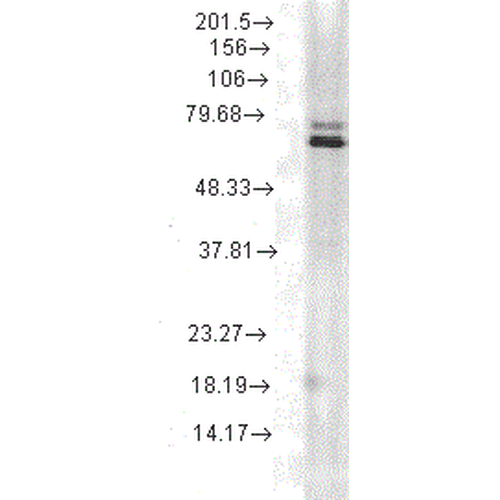抗HSP70抗体 | Anti-HSP70 antibody
掲載日情報:2018/10/03 現在Webページ番号:251729
StressMarq Biosciences社の抗HSP70抗体(Anti-HSP70 antibody)です。
※本製品は研究用です。研究用以外には使用できません。
カートに商品を
追加しました。
追加しました。
価格
[在庫・価格 :2024年05月04日 00時00分現在]
※ 表示されている納期は弊社に在庫が無く、取り寄せた場合の納期目安となります。
| 詳細 | 商品名 |
|
文献数 | ||||||||||||||||||||||||||||||||||||||||||||||||||||||||||||||||||||||||||||||||||
|---|---|---|---|---|---|---|---|---|---|---|---|---|---|---|---|---|---|---|---|---|---|---|---|---|---|---|---|---|---|---|---|---|---|---|---|---|---|---|---|---|---|---|---|---|---|---|---|---|---|---|---|---|---|---|---|---|---|---|---|---|---|---|---|---|---|---|---|---|---|---|---|---|---|---|---|---|---|---|---|---|---|---|---|---|---|
|
Anti-Hsp70, Mouse-Mono(5A5) |
|
本製品は取扱中止になりました | 0 | ||||||||||||||||||||||||||||||||||||||||||||||||||||||||||||||||||||||||||||||||||
|
|||||||||||||||||||||||||||||||||||||||||||||||||||||||||||||||||||||||||||||||||||||
[在庫・価格 :2024年05月04日 00時00分現在]
※ 表示されている納期は弊社に在庫が無く、取り寄せた場合の納期目安となります。
Anti-Hsp70, Mouse-Mono(5A5)
文献数: 0
- 商品コード:SMC-162C
- メーカー:STQ
- 包装:25μg
- 本製品は取扱中止になりました
| 説明文 |
クローン:5A5 Genbank No: 3303 Gene Accession No: NP_005336.3 Protein Accession No: P0DMV8 P0DMV9 |
||||||
|---|---|---|---|---|---|---|---|
| 別包装品 | 別包装品あり | ||||||
| 法規制等 | |||||||
| 保存条件 | 法規備考 | ||||||
| 抗原種 | Human | 免疫動物 | Mouse | ||||
| 交差性 | Amphibians/Chicken/Drosophila/Fish/Human/Mouse/Rat/Yeast | 適用 | Antibody Microarray,IC,IF,IHC,IP,Western Blot | ||||
| 標識 | Unlabeled | 性状 | Protein A/G Affinity Purified | ||||
| 吸収処理 | クラス | IgG | |||||
| クロナリティ | Monoclonal | フォーマット | |||||
| 掲載カタログ |
|
||||||
| 製品記事 |
HSP(Heat Shock Protein)関連抗体 抗HSP70抗体 | Anti-HSP70 antibody 熱ショックタンパク質研究用製品特集 |
||||||
| 関連記事 | |||||||
カートに商品を
追加しました。
追加しました。
製品情報
Product Name
HSP70 Antibody
Clonality
Monoclonal
Description
Mouse Anti-Human HSP70 Monoclonal IgG1
Research Areas
Cancer, Heat Shock, Cell Signaling, Chaperone Proteins, Protein Trafficking, Tumor Biomarkers
Alternative Names
HSP70 1 Antibody, HSP70 2 Antibody, HSP70.1 Antibody, HSP72 Antibody, HSPA1 Antibody, HSPA1A Antibody, HSPA1B Antibody
Clone Number
5A5
Host Species
Mouse
Isotype
IgG1
Immunogen
Human recombinant HSP70 overexpressed in E.coli
Applications
WB, IHC, ICC/IF, IP, AM
Species Reactivity
Human, Mouse, Rat, Amphibians, Chicken, Fish, Fruit Fly (Drosophila melanogaster), Yeast, Yeast (Saccharomyces cerevisiae)
Accession Number
NP_005336.3
Gene ID
3303
Swiss Prot
P08107
Specificity
Detects ~70kDa. May detect HSP70, HSC70, Grp78 and HSP72.
Purification
Protein G Purified
Storage Buffer
PBS pH7.2, 50% glycerol, 0.09% sodium azide
Certificate of Analysis
1 µg/ml of SMC-162 was sufficient for detection of HSP70 in 20 µg of heat shocked HeLa cell lysate by colorimetric immunoblot analysis using Goat anti-mouse IgG:HRP as the secondary antibody.
References
Scientific Background
HSP70 genes encode abundant heat-inducible 70-kDa HSPs (HSP70s). In most eukaryotes HSP70 genes exist as part of a multigene family. They are found in most cellular compartments of eukaryotes including nuclei, mitochondria, chloroplasts, the endoplasmic reticulum and the cytosol, as well as in bacteria. The genes show a high degree of conservation, having at least 50% identity (2). The N-terminal two thirds of HSP70s are more conserved than the C-terminal third. HSP70 binds ATP with high affinity and possesses a weak ATPase activity which can be stimulated by binding to unfolded proteins and synthetic peptides (3). When HSC70 (constitutively expressed) present in mammalian cells was truncated, ATP binding activity was found to reside in an N-terminal fragment of 44 kDa which lacked peptide binding capacity. Polypeptide binding ability therefore resided within the C-terminal half (4). The structure of this ATP binding domain displays multiple features of nucleotide binding proteins (5). All HSP70s, regardless of location, bind proteins, particularly unfolded ones. The molecular chaperones of the HSP70 family recognize and bind to nascent polypeptide chains as well as partially folded intermediates of proteins preventing their aggregation and misfolding. The binding of ATP triggers a critical conformational change leading to the release of the bound substrate protein (6). The universal ability of HSP70s to undergo cycles of binding to and release from hydrophobic stretches of partially unfolded proteins determines their role in a great variety of vital intracellular functions such as protein synthesis, protein folding and oligomerization and protein transport. For more information visit our HSP70 Scientific Resource Guide.
References
1. Balashova N. et al. (2005) J Biol Chem 280:2186-96.
2. Boorstein W. R., Ziegelhoffer T. & Craig E. A. (1993) J. Mol. Evol.38 (1): 1-17.
3. Rothman J. (1989) Cell 59: 591 -601.
4. DeLuca-Flaherty et al. (1990) Cell 62: 875-887.
5. Bork P., Sander C. & Valencia A. (1992) Proc. Nat Acad. Sci. USA 89: 7290-7294.
6. Fink A.L. (1999) Physiol. Rev. 79: 425-449.
HSP70 genes encode abundant heat-inducible 70-kDa HSPs (HSP70s). In most eukaryotes HSP70 genes exist as part of a multigene family. They are found in most cellular compartments of eukaryotes including nuclei, mitochondria, chloroplasts, the endoplasmic reticulum and the cytosol, as well as in bacteria. The genes show a high degree of conservation, having at least 50% identity (2). The N-terminal two thirds of HSP70s are more conserved than the C-terminal third. HSP70 binds ATP with high affinity and possesses a weak ATPase activity which can be stimulated by binding to unfolded proteins and synthetic peptides (3). When HSC70 (constitutively expressed) present in mammalian cells was truncated, ATP binding activity was found to reside in an N-terminal fragment of 44 kDa which lacked peptide binding capacity. Polypeptide binding ability therefore resided within the C-terminal half (4). The structure of this ATP binding domain displays multiple features of nucleotide binding proteins (5). All HSP70s, regardless of location, bind proteins, particularly unfolded ones. The molecular chaperones of the HSP70 family recognize and bind to nascent polypeptide chains as well as partially folded intermediates of proteins preventing their aggregation and misfolding. The binding of ATP triggers a critical conformational change leading to the release of the bound substrate protein (6). The universal ability of HSP70s to undergo cycles of binding to and release from hydrophobic stretches of partially unfolded proteins determines their role in a great variety of vital intracellular functions such as protein synthesis, protein folding and oligomerization and protein transport. For more information visit our HSP70 Scientific Resource Guide.
References
1. Balashova N. et al. (2005) J Biol Chem 280:2186-96.
2. Boorstein W. R., Ziegelhoffer T. & Craig E. A. (1993) J. Mol. Evol.38 (1): 1-17.
3. Rothman J. (1989) Cell 59: 591 -601.
4. DeLuca-Flaherty et al. (1990) Cell 62: 875-887.
5. Bork P., Sander C. & Valencia A. (1992) Proc. Nat Acad. Sci. USA 89: 7290-7294.
6. Fink A.L. (1999) Physiol. Rev. 79: 425-449.
カートに商品を
追加しました。
追加しました。
製品情報は掲載時点のものですが、価格表内の価格については随時最新のものに更新されます。お問い合わせいただくタイミングにより製品情報・価格などは変更されている場合があります。
表示価格に、消費税等は含まれていません。一部価格が予告なく変更される場合がありますので、あらかじめご了承下さい。





